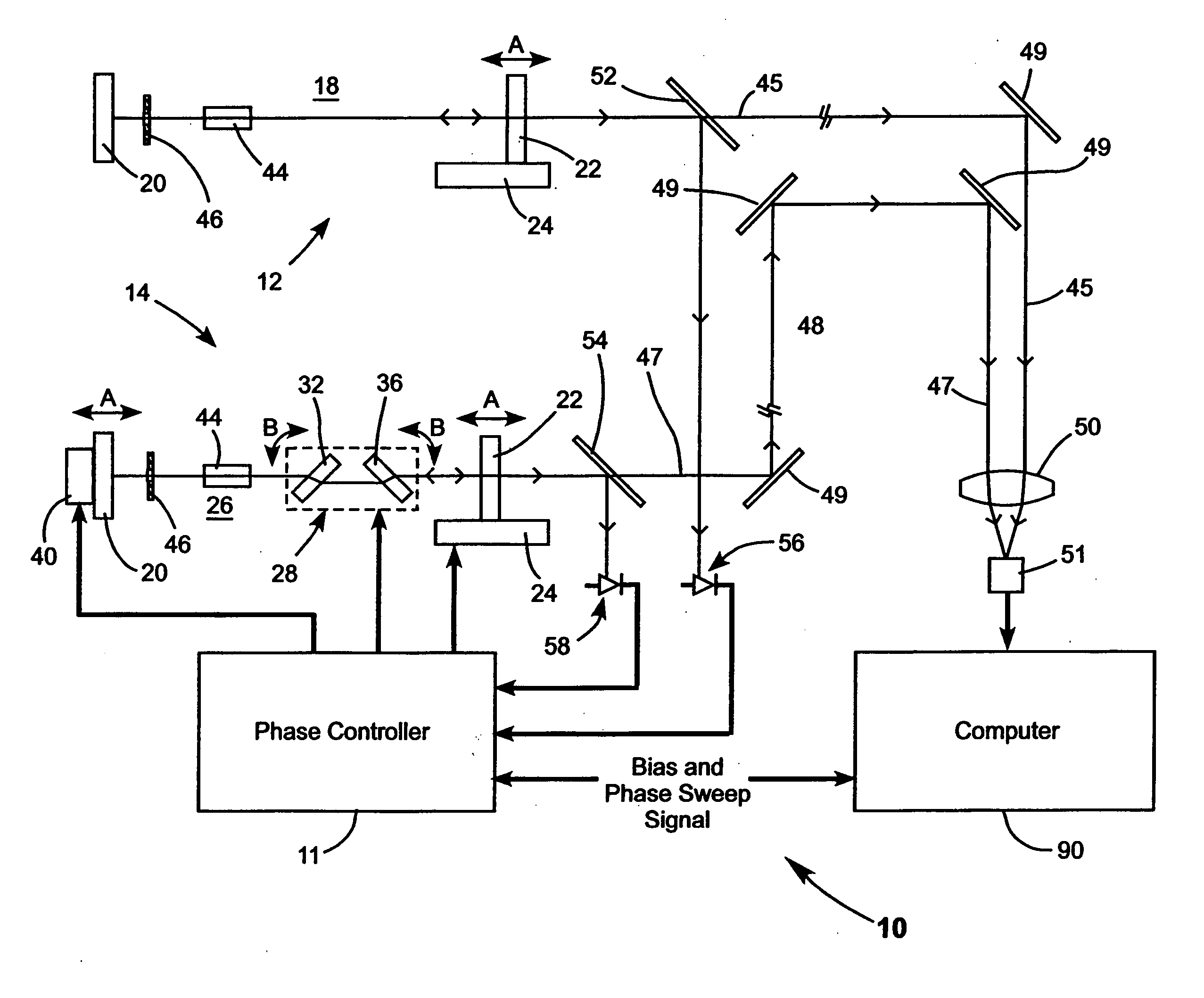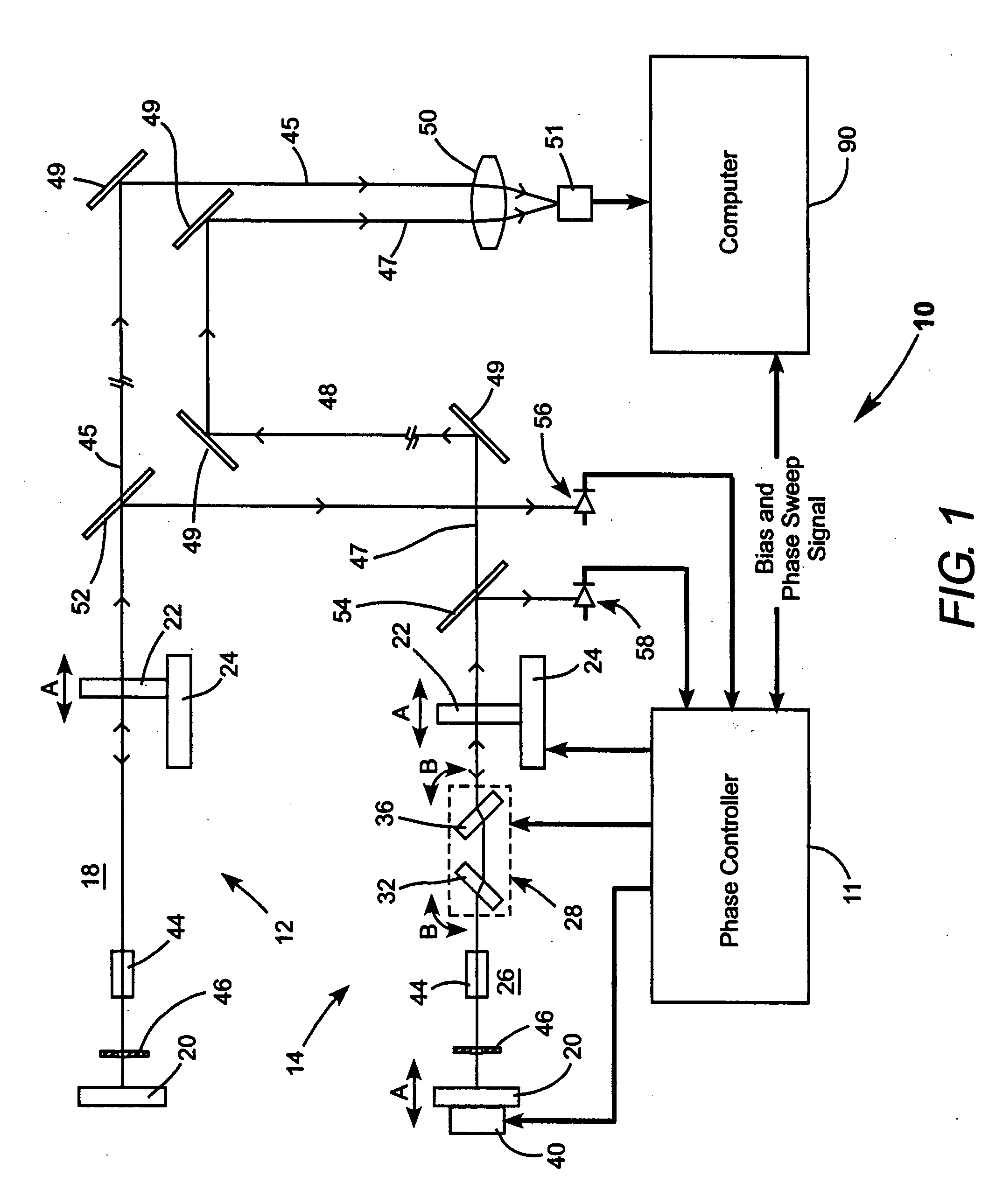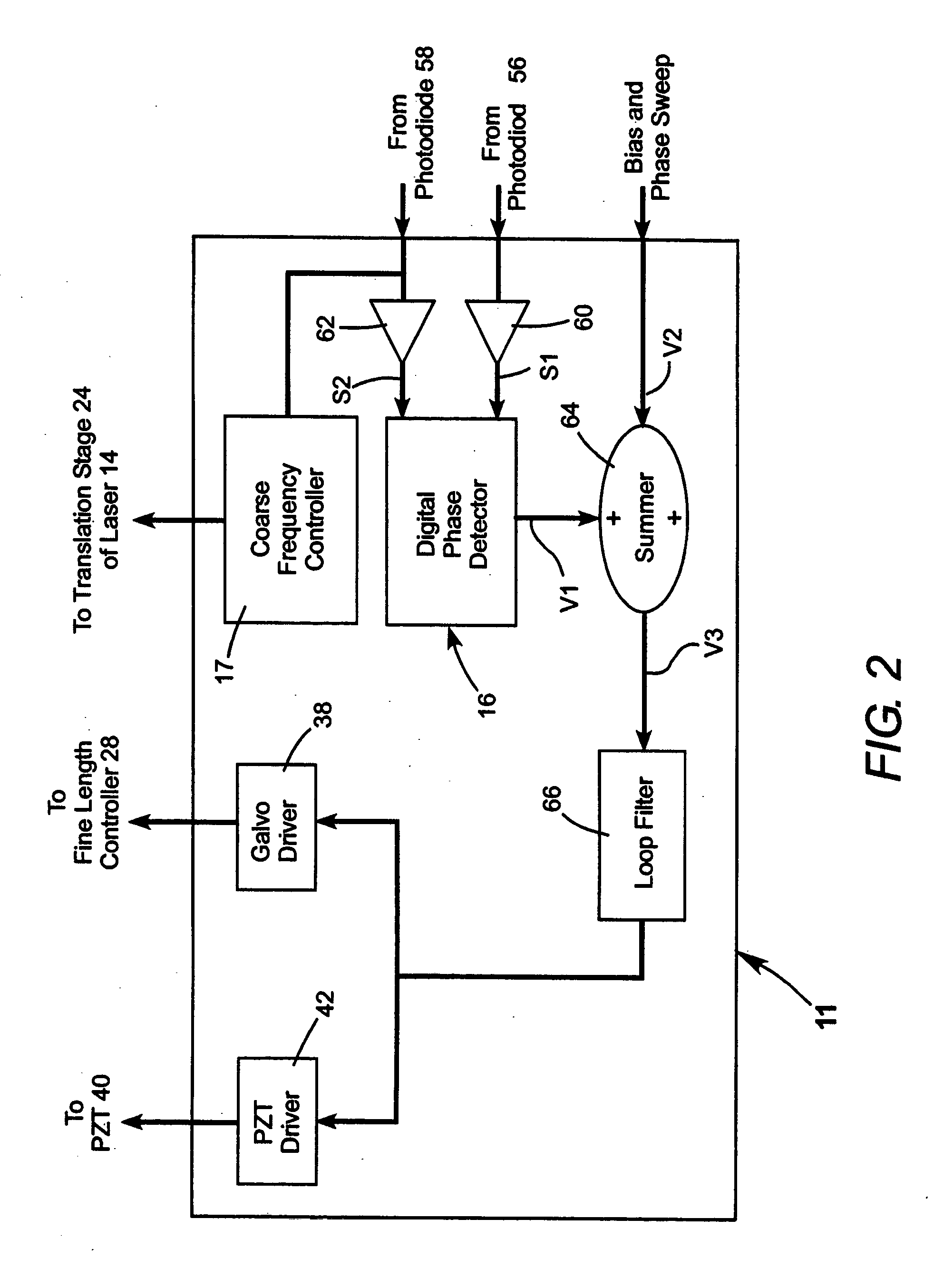Time correlation of ultrafast laser pulses
a laser pulse and time correlation technology, applied in the field of measuring characteristics of ultrafast laser pulses, can solve the problems of becoming, less able to provide signal that gives accurate representation of conventional optical detectors such as photodiode detectors
- Summary
- Abstract
- Description
- Claims
- Application Information
AI Technical Summary
Benefits of technology
Problems solved by technology
Method used
Image
Examples
Embodiment Construction
Turning now to the drawings, wherein like features are designated by like reference numerals, FIG. 1 schematically illustrates a preferred apparatus 10 for implementing a cross-correlation method in accordance with the present invention. Apparatus 10 includes two lasers 12 and 14, and a phase (and frequency) controller 11 for synchronizing the output of the lasers. FIG. 2 schematically illustrates the functional layout of a preferred example of a phase controller 11 including a digital phase detector 16. FIG. 3 schematically illustrates electronic circuits and their interconnection in digital phase detector 16. In FIG. 1, the paths of laser pulses in and from the lasers are designated by fine lines, and the direction of propagation of the laser pulses is indicated by open arrows. Connections between electronic circuits and electronic function blocks are indicated in FIG. 1 and FIG. 2 by bold lines, with the direction of signal transfer between the circuits and blocks indicated by s...
PUM
 Login to View More
Login to View More Abstract
Description
Claims
Application Information
 Login to View More
Login to View More - R&D
- Intellectual Property
- Life Sciences
- Materials
- Tech Scout
- Unparalleled Data Quality
- Higher Quality Content
- 60% Fewer Hallucinations
Browse by: Latest US Patents, China's latest patents, Technical Efficacy Thesaurus, Application Domain, Technology Topic, Popular Technical Reports.
© 2025 PatSnap. All rights reserved.Legal|Privacy policy|Modern Slavery Act Transparency Statement|Sitemap|About US| Contact US: help@patsnap.com



